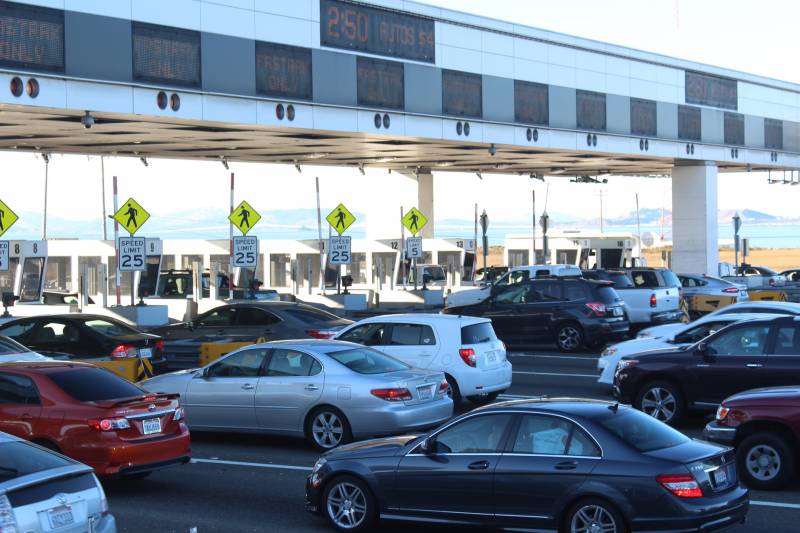The last few years have been full of disruption for Bay Area residents, but one change in particular has caught many people’s attention. When Bay Area leaders started issuing stay-at-home orders due to the coronavirus pandemic in March of 2020, Caltrans pulled toll takers from their booths to help stop the spread of the virus. They sped up an existing plan to automate toll taking on the seven state-owned bridges in the Bay Area.
For drivers who have set up FasTrak or a license plate account, that change isn’t a big deal. But for the thousands of people who don’t have automated accounts set up, this was a major change. When they cross a bridge, an invoice is now sent to the address attached to their car’s registration.
As these changes were happening, Bay Curious listeners were writing to us wondering what happened to the toll workers, what their absence would mean for toll collection and, eventually, alerting us to an escalating problem of toll debt stemming from high penalties attached to unpaid tolls.
“This was something I wasn’t worried about before the pandemic,” said Paul Briley, for whom $588 in missed tolls has mushroomed into more than $6,000 of toll debt. “I pay my dues. I mean, if somebody was there I would have paid. It’s not like I was trying to beat the system.”
Briley lives in Richmond, but crosses the Bay Bridge often to help his grandmother in San Francisco with errands. His toll notices were going to an old address, so he never saw them. And for each unpaid $6 toll, he was assessed $70 in penalties. That added up quickly. Now, he’s facing a mountain of debt — all, he says, because he was slow to get on board with the new toll system.
